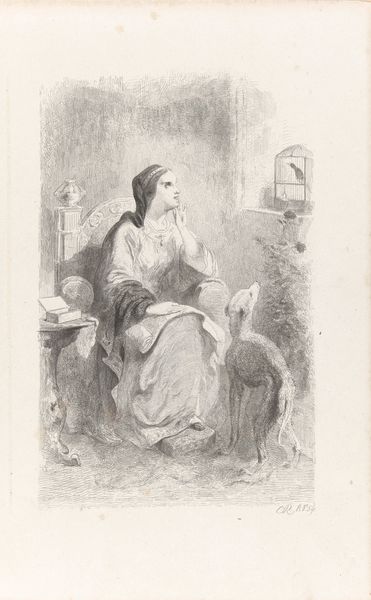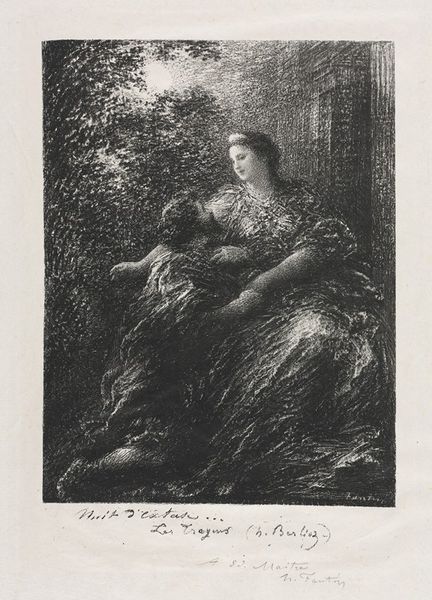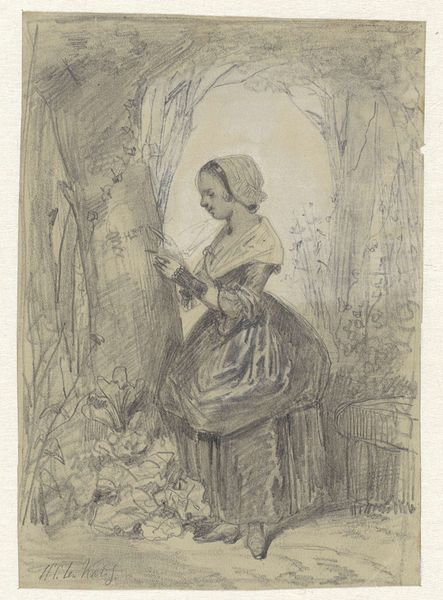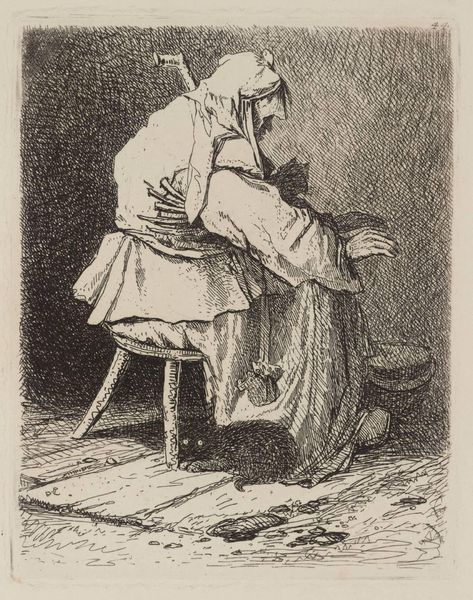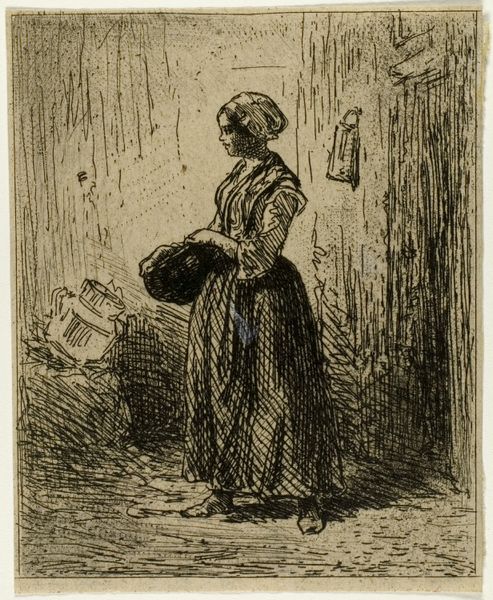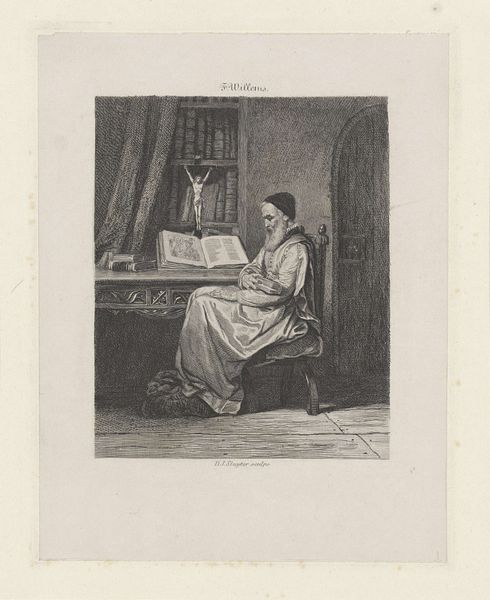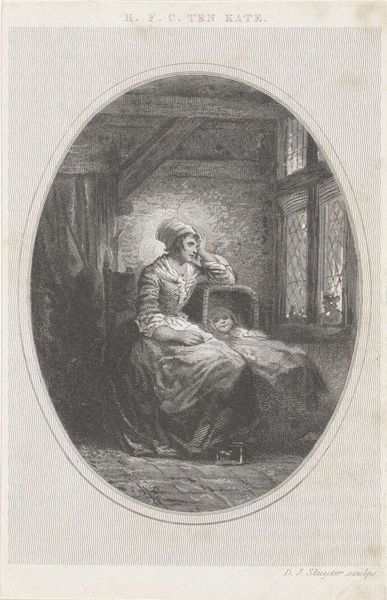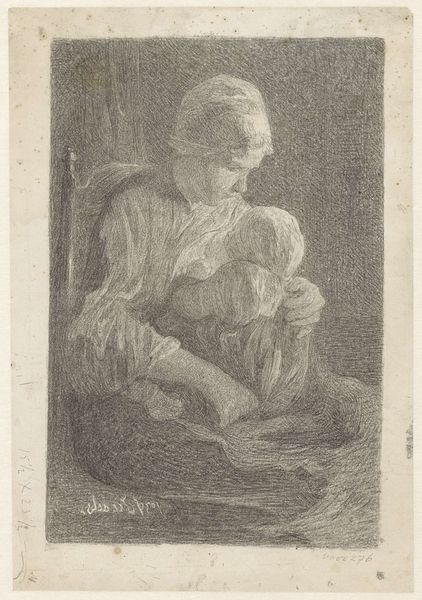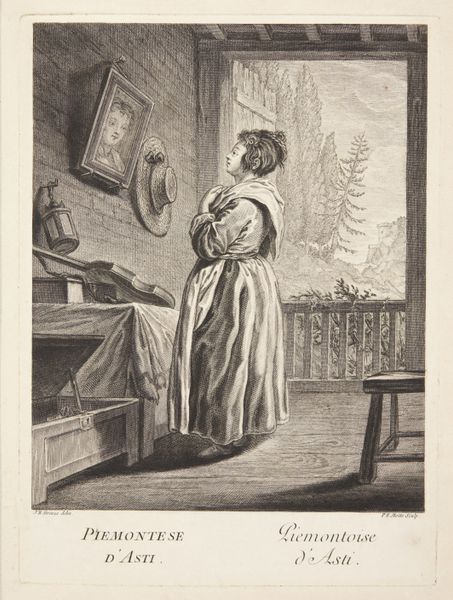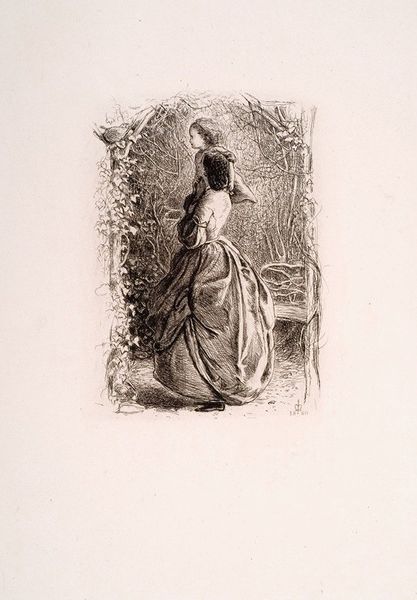
#
pencil drawn
#
amateur sketch
#
light pencil work
#
shading to add clarity
#
pencil sketch
#
old engraving style
#
personal sketchbook
#
pen-ink sketch
#
sketchbook drawing
#
pencil work
Dimensions: width 145 mm, height 109 mm
Copyright: Rijks Museum: Open Domain
Reinier Craeyvanger made this print, "Seamstress and Violin Player," using etching, a printmaking technique, around the mid-19th century. Etching involves coating a metal plate with a waxy, acid-resistant substance, then scratching an image into the wax. When acid is applied, it bites into the exposed metal, creating lines that hold ink. The printmaker then applies ink, wipes the surface clean, and presses paper against the plate to transfer the image. Here, the fine, closely-spaced lines evoke the textures of fabric and the soft light in the room. Note the contrast between the detailed foreground and the shadowy, indistinct figure of the musician. Craeyvanger’s choice of etching speaks to the burgeoning print culture of his time, as the industrial revolution was making images more widely accessible, but still requiring a highly skilled hand to produce. In this context, it's worth asking: Whose labor is visible, and whose is obscured? The seamstress, diligently at work, contrasts with the almost ghostlike violinist, raising questions about visibility, class, and artistic creation.
Comments
No comments
Be the first to comment and join the conversation on the ultimate creative platform.
